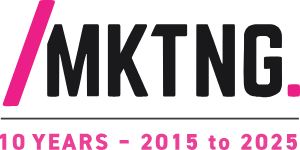For decades, the press release reigned supreme in the communications kingdom—a formal declaration to the world that something important was happening. Write it up, blast it out on a newswire, and wait for journalists to come calling. But is this trusty tool still relevant in today’s overcrowded and fragmented media landscape?
The short answer: yes, but with an asterisk.
Public relations as a standalone strategy is starting to feel as important as full-page newspaper ads did a few years ago. Press releases haven’t disappeared, but their role has fundamentally shifted.
Why Traditional Media Relations Is Losing Its Solo Act
-
Shrinking newsrooms means fewer journalists covering more beats with less time to sift through releases
-
Overwhelming competition for attention, with the average journalist/producer/etc. receiving hundreds of emails daily
-
Declining public trust and engagement with traditional sources
-
Fragmented audiences who consume information across multiple platforms
-
Society has shifted into a post-24/7 news cycle that quickly buries yesterday’s announcement
When Press Releases Still Matter
-
Creating an official record of company milestones and announcements
-
Providing consistent messaging across stakeholders, coalitions, and/or organizations
-
Improving search engine visibility SEO for your brand and news
-
Meeting regulatory requirements (for public companies)
-
Serving as the foundation for broader content creation, including social media captions, newsletter, blast email, fact sheet, and/or podcast episode
The Modern Communications Symphony
-
Direct-to-audience content: Develop robust newsrooms and/or blogs on your website where you control the narrative, messaging, framing, and timing (you’ll also capture all of the web traffic)
-
Visual storytelling: Transform announcements into compelling infographics, short videos, podcasts, and/or interactive content (e.g., customer/client surveys or open-ended questions to ask your followers)
-
Social-first approaches: Craft announcement strategies that begin on platforms where your audiences already gather — just keep your timing tight. If you announce news on TikTok, make sure your other channels are tee’ed up to amplify the content (e.g., send your press release to subscribers and media, promote on social media, and launch a podcast episode that same day).
-
Relationship-based pitching: Personalize outreach to specific journalists based on their interests and previous coverage. Social media is a great way to discover your targets’ favorite places and sports teams, whether team dogs or cats, which can help you build relationships.
-
Community engagement: Meet decision-makers where they are through sponsorships and events
We still issued the press release and placed an op-ed, but our breakthrough came when we sponsored charity events these officials supported. Those informal conversations over wine proved far more effective than formal office meetings—and ultimately saved the client time and money.



